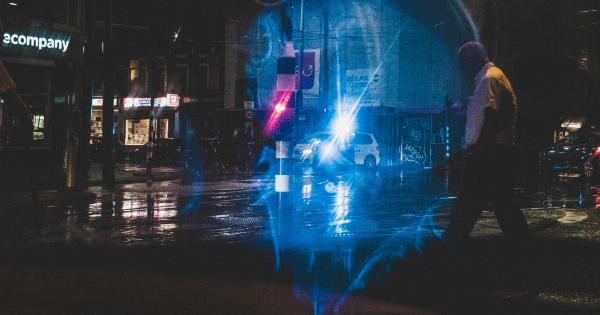Migraine is a debilitating neurological disorder characterized by recurrent headaches, often accompanied by various symptoms such as nausea, vomiting, and light sensitivity.
Among these symptoms, light sensitivity, also known as photophobia, is one of the most common and distressing features experienced by migraine sufferers. In this article, we will explore the impact of light sensitivity on migraine and discuss various strategies to manage and find relief from this challenging aspect of the condition.
Understanding Light Sensitivity in Migraine
Light sensitivity is a heightened sensitivity to light that can trigger or worsen migraines in many individuals. It is reported by approximately 80-90% of people with migraines.
While the exact mechanisms behind this sensitivity are not fully understood, it is believed to be linked to the neurological changes that occur during a migraine attack.
The Role of Photoreceptors in Light Sensitivity
In our eyes, there are specialized cells called photoreceptors that enable us to perceive light. Two types of photoreceptors, known as rods and cones, play a significant role in our vision and light perception.
Researchers have discovered that individuals with migraines have altered functioning of these photoreceptors, making them more susceptible to light-induced discomfort and pain.
Types of Light Triggers
Various types of light can trigger migraines or worsen existing ones. These include:.
- Fluorescent lighting
- Bright or flickering lights
- Computer screens and other electronic devices
- Natural sunlight
- Flash photography
The Impact of Light Sensitivity on Daily Life
Light sensitivity can significantly disrupt the daily life of individuals with migraines. It may lead to avoidance of certain environments or activities, social isolation, and reduced productivity.
The fear of light-triggered migraines may also restrict individuals from participating in outdoor activities or enjoying time with family and friends.
Strategies to Manage Light Sensitivity
Fortunately, several strategies can help manage light sensitivity in individuals with migraines. These include:.
1. Wearing Tinted Glasses
Wearing tinted glasses or sunglasses indoors and outdoors can provide relief by reducing the intensity of light entering the eyes. Glasses with a pink or rose tint, in particular, have been found helpful in reducing photophobia.
2. Using Graduated Lenses
Graduated lenses are eyeglasses with lenses that transition seamlessly from clearer on top to darker at the bottom.
This type of eyewear can be useful in minimizing exposure to bright lights while maintaining optimal vision in various lighting conditions.
3. Installing Light Filters
Installing light filters or using lampshades with filters can help soften the harshness of light sources. These filters can be applied to both natural and artificial light sources such as windows, overhead lights, and lamps.
4. Adjusting Display Settings
Reducing screen brightness, adjusting contrast levels, and using blue light filters on electronic devices like computers, smartphones, and tablets can alleviate discomfort caused by screen glare and excessive light exposure.
5. Creating a Dark Environment
Creating a dark environment during migraine attacks or when experiencing light sensitivity can provide relief. Closing curtains, using blackout blinds, or wearing an eye mask can effectively block out external light sources.
6. Utilizing Task Lighting
When engaging in activities that require focused lighting, such as reading or crafting, using task lighting with directed illumination can minimize the impact of ambient light while providing adequate visibility for the task at hand.
7. Trying Precision Tinted Lenses
Precision tinted lenses are custom tinted glasses specifically designed to target the unique needs of individuals with migraines and light sensitivity. These lenses can be prescribed by optometrists or ophthalmologists after careful evaluation.
8. Practicing Good Light Hygiene
Adopting good light hygiene practices involves being mindful of lighting conditions and making appropriate adjustments. This may include dimming lights at home, avoiding excessively bright environments, and using indirect lighting whenever possible.
9. Seeking Shade and Protection Outdoors
When venturing outdoors, seeking shade, wearing a wide-brimmed hat, and using sunglasses with UV protection can shield the eyes from harsh sunlight and minimize the impact of strong lighting conditions.
10. Consulting a Healthcare Professional
If light sensitivity persists or significantly impairs daily life despite self-management strategies, it is advisable to consult a healthcare professional.
They can provide a comprehensive assessment, diagnose any underlying conditions, and recommend appropriate treatment options.
Conclusion
Light sensitivity is a common and distressing symptom experienced by individuals with migraines.
The impact of bright lights and other sources of illumination can trigger or worsen migraine attacks, leading to significant discomfort and disruption in daily life. By adopting various strategies such as wearing tinted glasses, using light filters, and adjusting lighting environments, individuals with migraines can effectively manage light sensitivity and find relief.
It is essential to remember that each individual may have unique triggers and preferences, so a personalized approach to managing light sensitivity is crucial. By taking affirmative steps towards managing light sensitivity, individuals with migraines can regain control of their lives and minimize the impact of this challenging symptom.























